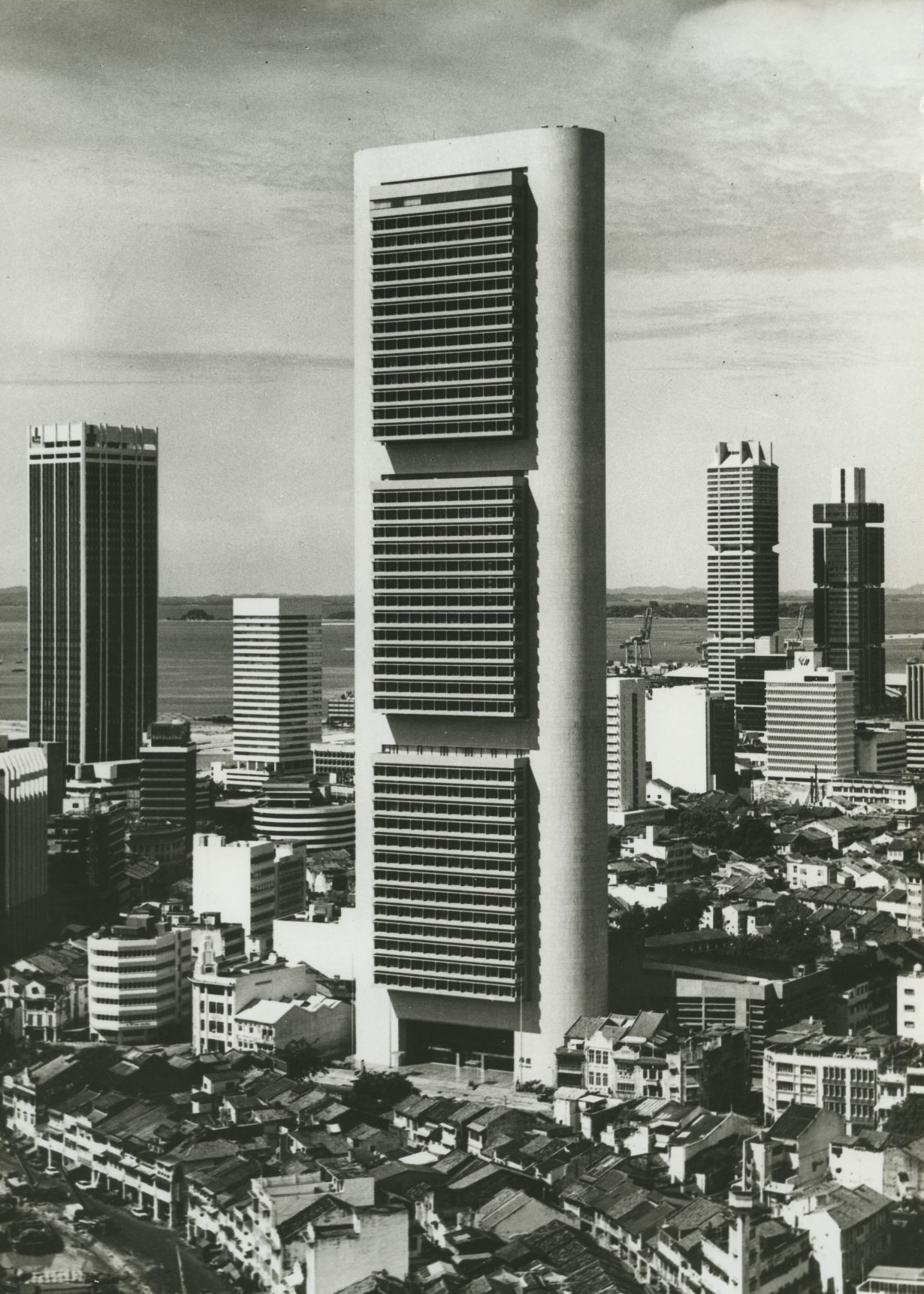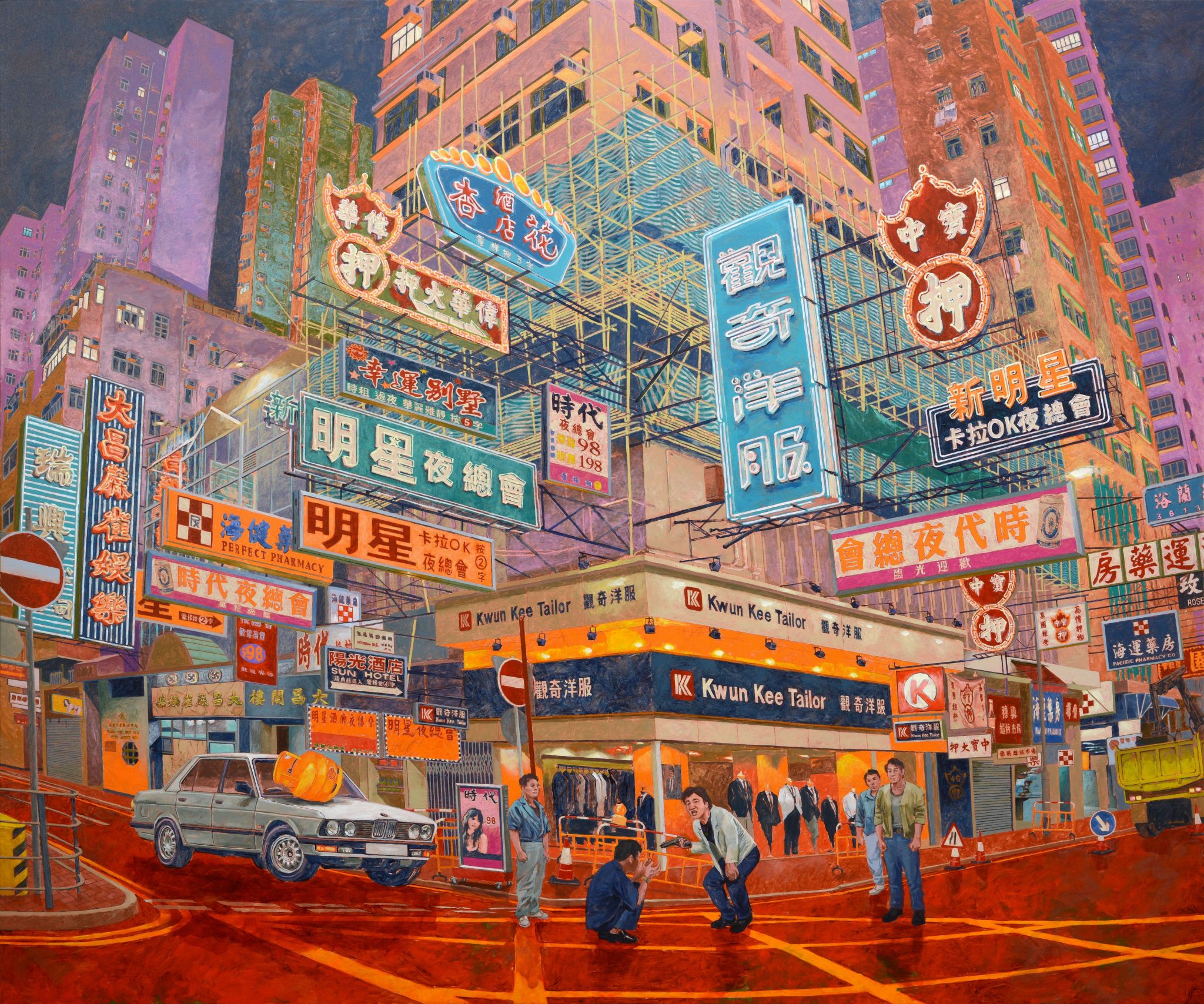As Hong Kong gets swept up in anniversary celebrations for the People’s Republic of China, recent museum and gallery programming reveals the battle for the city’s identity
The whole of China has been busy for months with the celebrations, on 1 October, of the 75th anniversary of the establishment of the People’s Republic of China, and Hong Kong has been no exception. What with the numerous red flags decorating the city, the fireworks, various events and special discounts on the day of the anniversary itself, the Hong Kong government has been setting the scene for months. The August opening of the National Security Exhibition Gallery inside the Museum of History (where the Permanent Exhibition is still under renovation) is a case in point. The gallery greets visitors with a large slogan that reads: ‘National Security is the bedrock of national rejuvenation. Social stability is a prerequisite for building a strong and prosperous China.’ Nearby, at the Science Museum, an exhibition titled Glorious Voyage: Splendid Achievements of the People’s Republic of China in Its 75 Years opened just in time for the anniversary celebrations, with sections like ‘Leapfrog Development’, ‘Scientific Breakthroughs’ and ‘Era of Intelligence’ that showcase ‘the patriotic spirit and steadfast beliefs of Chinese scientists, while emphasising the brilliant accomplishments and key technological breakthroughs of the new China’. The language on display is still unusual for Hong Kong, even four years after the passing of the National Security Law (introduced at the end of June 2020). To quote just a few examples: ‘Over the splendid 75 years since the establishment of new China, the nation’s technological endeavours have leaped from non-existence to global prominence,’ it says. The exhibition glorifies a place that is most commonly linked with the Cultural Revolution and its push for heroic industrial advances, the Daqing Oil Field. ‘A Chip-driven Patriotic Heart’, the last part of the exhibition, on the other hand, ‘focuses on the breakthroughs in artificial intelligence (AI) and semiconductors’. These highly institutional shows are part of an ongoing attempt to make Hong Kong people identify more with the mainland, and also feel more pride in its achievements.

Other institutions around town are not as explicitly patriotic, but the main shows that can be visited at the moment tend to prioritise artists with strong links to the Chinese mainland: at M+ there is the inaugural museum retrospective of Guo Pei, China’s first haute couture designer, titled Fashioning Imagination, with some of her most famous creations, including the yellow dress that Rihanna wore at the Met Gala in 2015. In the gallery next to this is Life is Architecture, an exhibition celebrating seven decades of I.M. Pei’s architecture – although Pei was international, and M+ does highlight that. The nearby Palace Museum has inaugurated a 110-object exhibition titled The Origins of Chinese Civilization, a major archaeological exhibition of ancient artefacts from 14 different sites in order to explore ‘the origins and development of Chinese civilisation’. Tai Kwun Contemporary too is showcasing a solo exhibition of a mainland artist, Tao Hui (although no patriotic overtones are to be detected in his rather gloomy vision of contemporary alienation).


While all this is ongoing, the local ecosystem has been evolving too, getting more opulent thanks to the opening of the glitzy new Asia Pacific headquarters of Christie’s, now occupying four floors of Zaha Hadid Architects’ latest building, The Henderson. Not far away, at the Landmark Chater, is the new Sotheby’s Maison, designed by MVRDV, with two floors dedicated to rotating exhibitions of pieces from all eras and places – from Banksy’s shredded Girl Without Balloon (2021) to Korean ceramics and prehistoric fossils, to ancient European and Chinese furniture. Both these grand openings are meant to tap into the Chinese collectors’ market and, to some extent, the regional one, in spite of lacklustre sales due to a slowing economy.
And while local blue-chip galleries continue with variegated offerings, bringing to Hong Kong international artists like Amadeo Luciano Lorenzato (on show at David Zwirner) or Lee Jin Woo (recently exhibited at White Cube), the work of local artists on display elsewhere is stubbornly concentrated on Hong Kong itself, exploring all the possible variations of memory, nostalgia and celebrations of the city’s uniqueness. Yeung Hok Tak, whose See You There at Kiang Malingue is a solo show of 19 acrylic paintings with street scenes of Hong Kong (pastiches of real and invented landscapes) and cartoonlike portraits of imaginary characters, explains that this obsession with Hong Kong itself “is a way to cherish our beloved city. Our good days, and our awkward days.”

Other established artists, like Chow Chun Fai, are exploring this same theme. His acrylic paintings mix past and present street scenes – in a place constantly reshaped by demolition and new construction – adding, in his two most recent shows at Tang Contemporary Art, movie stars picked from the most beloved and successful Hong Kong movies. By reimagining cinematic moments engraved in most Hongkonger’s imaginations in different settings, from iconic movies such as A Better Tomorrow (1986), Comrades: Almost a Love Story (1996) or Infernal Affairs (2002), he creates new stories, like new possibilities, in a city that is still trying to gauge its new reality. These are mostly very large pieces in a bright, slightly acidic palette that recalls the ubiquitous neon signs that used to illuminate Hong Kong, and have now been mostly taken down due to new city regulations. Debe Sham, a multimedia artist who has recently been recreating traditional Hong Kong toys – such as little whistles that used to be found in laundry powder, windmills and the type of seesaw that is common in local housing estates – with soldered metal, explains to me that the rules of any game “are restrictions, of course, yet they force our creativity to develop in spite of them, so it can be an interesting exercise”. Read in this what you will.
In many artists’ work, anything too overtly political is better left out entirely, or just hinted at for those who get it. “Everything political that you see in my paintings”, says an artist who requested anonymity, “is what you are seeing. You are free to decide if it is there or not.”
Ilaria Maria Sala is a writer and journalist based in Hong Kong
From the Winter 2024 issue of ArtReview Asia – get your copy.
